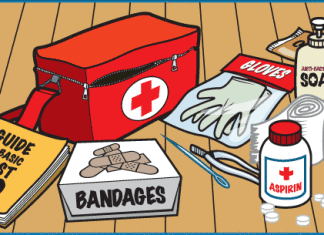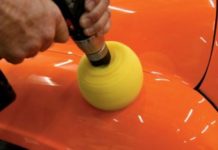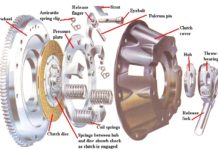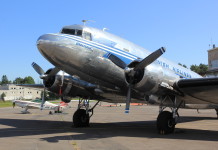Power Forging
Hand hammer blows impact will not be always sufficient enough to affect the proper plastic flow in a medium sized or heavy forging. It also causes fatigue to the hammer man. To have heavy impact or blow for more plastic deformation, power hammer are generally employed.
These hammers are operated by compressed air, steam, oil pressure, spring and gravity. They are generally classified as spring hammer and drop hammers. The capacity of these hammers is given by the total weight. A 100 kg hammer will be one of which the falling pans weigh 100 kg. The heavier these parts and greater the height from which they fall, the higher will be intensity of blow the hammer will provide. Power hammers are of different types e.g. spring power hammers, pneumatic power hammers etc. These hammers are named due to their construction, according to their way of operation and according to the type of fuel they use for getting the required power for operation. Besides these, a large number of forging presses are also used in forging work. Typical hammers are discussed in following in following paragraphs.
Spring Hammer
Spring hammer is commonly used for small forgings. It is light type of power hammer. The typical design of a spring hammer is shown in Fig. It consists of a heavy rigid frame carrying a vertical projection at its top. This projection acts as a housing of bearing in which the laminated spring oscillates. The rear end of this spring carries a connecting rod and the other front end a vertical top which carries weight and moves vertically up and down between fixed guides provided for this purpose. The connecting rod at its lower end is attached to an eccentric sheave, which is further connected to the crank wheel. Fox operating the hammer the treadle is pressed downwards which makes the sheave to rotate through the crank wheel and thus the laminated spring starts oscillating in the bearing. This oscillation of the spring is responsible for the up and down movement of the tup thus, the required blows are provided on the job to be forged. A hand lever is also equipped with this mechanical kind of hammer to adjust the stroke of the connecting rod and, hence the intensity of blows.
Eccentric type of spring hammer is the one in which a rotating eccentric disc is used for producing vibrations in the spring. It can be operated by means of a foot ring, known as treadle provided at the bottom and is connected to the shaft at the top through a vertical bar having a clutch at its end. The shaft at the top of hammer carries a pulley and a solid disc at the end. The pulley is driven by means of a belt from the line shaft or an electric motor.
The solid disc, at the, end of the shaft, carries a crank connected eccentrically to it which has a laminated spring at its lower end. The nip carrying the weight is suspended on a toggle joint connecting the two ends of the laminated spring. When the foot treadle is pressed the clutch engages with the shaft and the disc carrying the crank starts rotating which in turn produces fluctuations in the toggle joint of the machine. It makes the tup to move and down in vertical direction. The speed of blows entirely depends upon the speed of the driving pulley.
Spring hammers may be made available in various capacities having the tup weights from 30 to 250 kg. Those having top weights 50 to 100 kg and speed of blows up to 300 per minute are in generally used in forging shop. These hammers have a common drawback in their springs getting broken very frequently due to severe vibrations during forging of the jobs in the forging shop.
Drop Hammers
Drop hammers are operated hydraulically and are widely used for shaping parts by drop hammering a heated bar or billet into a die cavity as shown in Fig. A drop forging raises a massive weight and allows it to fall under gravity on close dies in which forge component is allowed to be compressed. The die incorporates its shape on to the hot work piece as shown in Fig. Drop hammers are commonly used for forging copper alloys and steel. Source Introduction of a Basic Manufacturing Processes and Workshop Technology by Rajender Singh.















